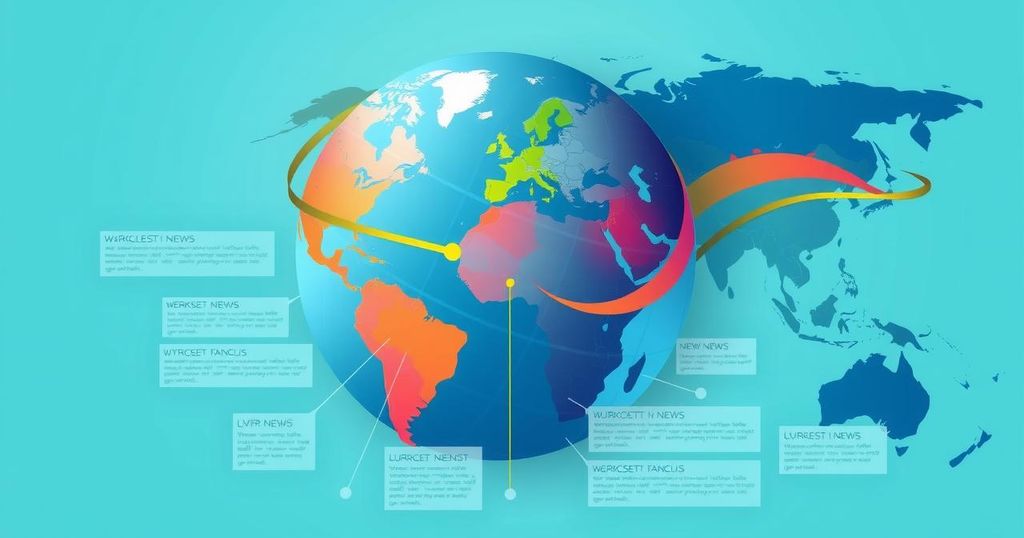Typhoon Toraji struck northeastern Aurora province in the Philippines, expected to weaken as it moves northwest across Luzon. President Ferdinand Marcos Jr. has prioritized disaster recovery efforts, ordering evacuations and military support. The storm highlights the country’s vulnerability, with previous storms leading to fatalities and widespread dislocation. International aid is being mobilized to assist the affected areas.
Typhoon Toraji has made landfall in northeastern Aurora province of the Philippines and is anticipated to move towards the mountainous regions of Luzon. President Ferdinand Marcos Jr. was actively involved in the aftermath of previous storms, distributing food to affected residents in Cagayan and Ilocos provinces. He prioritized disaster response over attending the Asia-Pacific Cooperation forum in Peru this week to manage recovery efforts from successive storms.
The typhoon, which hit Aurora on Monday morning with winds reaching 130 kilometers (81 miles) per hour and gusts up to 180 kilometers (112 miles) per hour, is projected to weaken as it travels northwest across Luzon before entering the South China Sea. Interior Secretary Jonvic Remulla has mandated the evacuation of individuals from 2,500 villages likely to be impacted by Toraji. He cautioned that the already rain-saturated landscapes of Luzon are prone to flash floods and landslides.
Jonvic Remulla stated, “We understand if some would want to stay, but we have to get them out.” In preparation for the storm’s impact, military disaster-response forces are deployed in high-risk areas, and combat operations in the north have been suspended. Armed Forces spokesperson Col. Francel Margareth Padilla affirmed that their focus remains on safeguarding citizens during disasters.
In response to the approaching typhoon, schools have been closed, inter-island ferry services halted, and domestic flights suspended in areas along the storm’s path. This is the 14th weather disturbance to hit the Philippines this year, and meteorologists are also monitoring another potential storm in the Pacific that may further impact the nation.
The previous typhoons and a tropical storm have resulted in over 160 fatalities, with significant damage to houses and farmland, affecting more than nine million individuals. Many displaced persons have sought refuge in emergency shelters following unprecedented rainfall that delivered one to two months’ worth of precipitation in mere hours. To assist with the ongoing crisis, the Philippines has received aid from Southeast Asian nations, led by Singapore, and support from the United States.
In conclusion, the devastation caused by Typhoon Toraji highlights the severe impact of adverse weather conditions on the Philippine archipelago. The proactive measures taken by officials, including evacuation orders and military deployments, are critical responses aimed at minimizing casualties and damage. Continued international assistance is essential as recovery efforts unfold amidst the challenges posed by additional potential storms.
Original Source: www.mid-day.com




